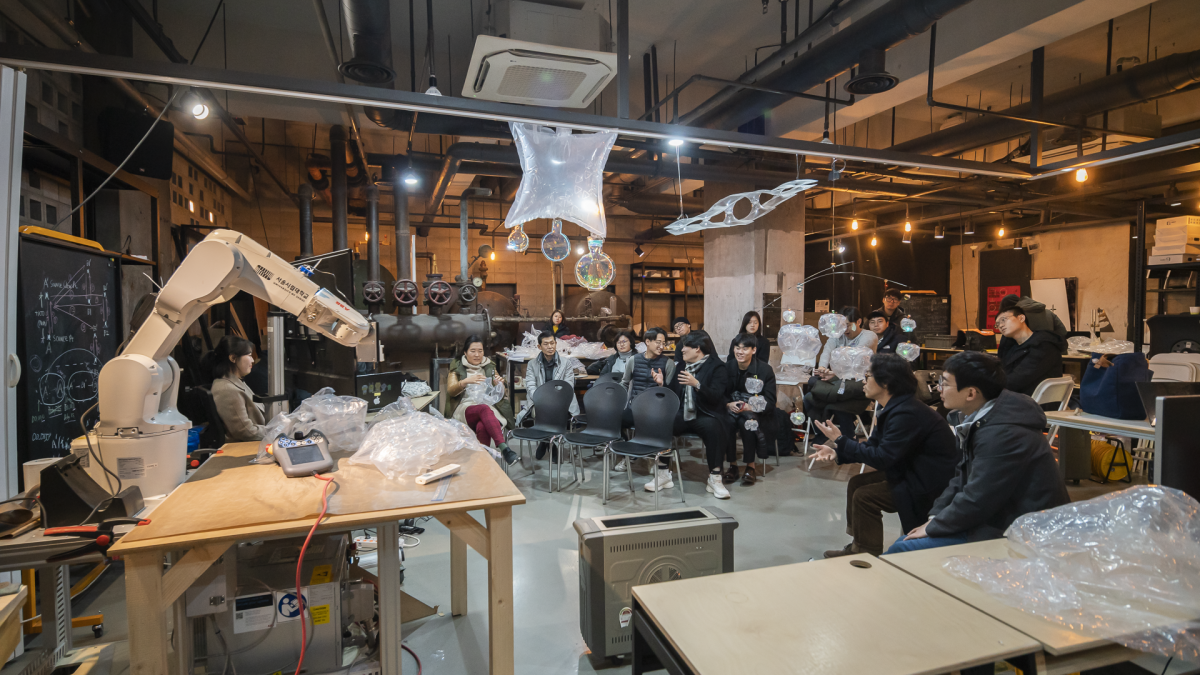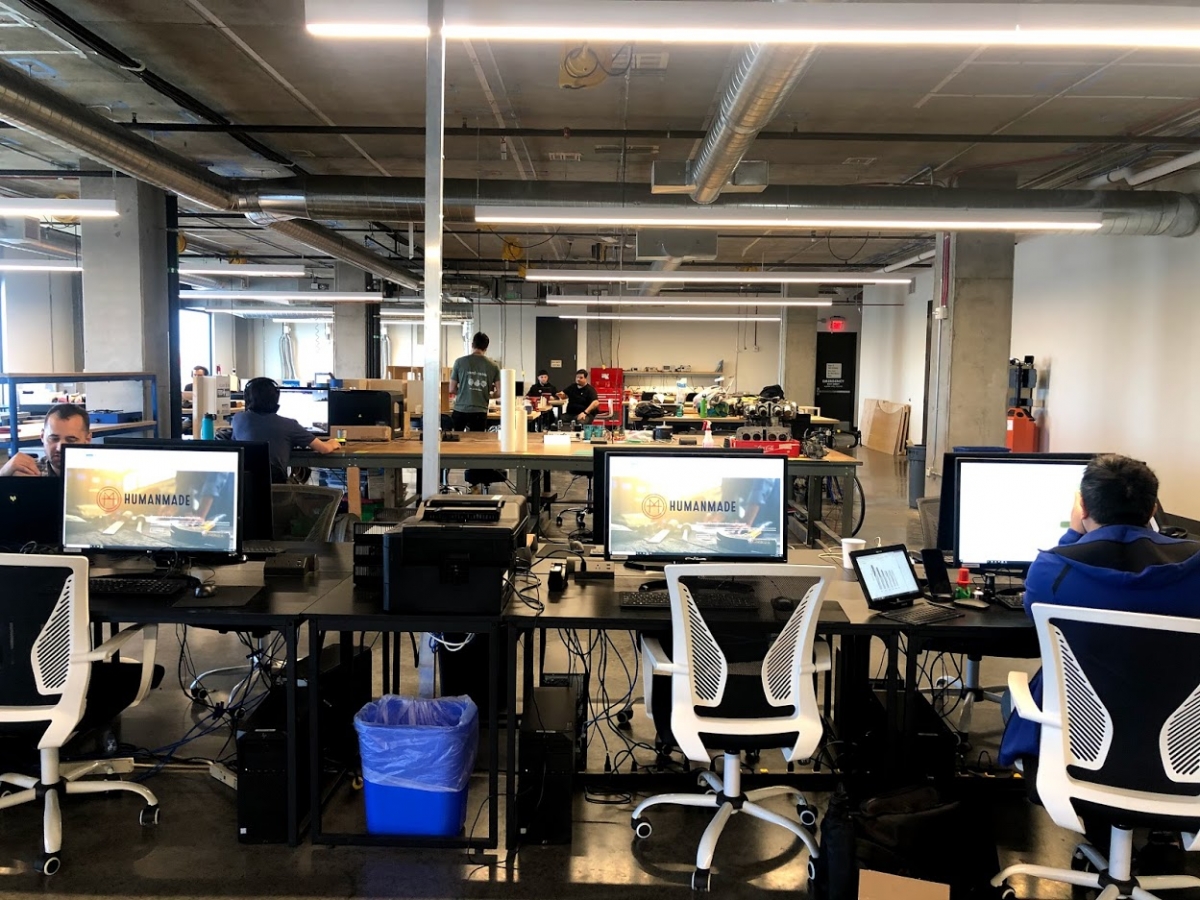Sewoon Campus
Leader ㅣ Hwang Jie-Eun
Member ㅣ University of Seoul
Operation period ㅣ 2017. - in progress
Main program ㅣ forum, workshop, design studio
Operational purpose ㅣ Aiming field-type creative convergence education and practical research. Linking education and research processes with local industries, and linking local issues with international research networks.
Website ㅣ https://www.facebook.com/SewoonCampus

Lecture at Sewoon CampusⓒLee Taeksu
Hwang Jie-Eun professor, University of Seoul × Bang Yukyung
Bang Yukyung (Bang): Please tell us about the process behind the planning and construction of the Sewoon Campus.
Hwang Jie-Eun (Hwang): The idea came when I was working on ‘Production City’, a field project for the Seoul Biennale of Architecture and Urbanism 2017. At that time, the ‘Remake Sewoon’ urban regeneration project was underway around the Sewoon Plaza, positing makers, artisans, startups and innovation as its keywords. To that end, I invented a programme that would use a high-tech gadget like an industrial robot or a 3D printer as a medium through which to help artists, researchers and students, and establish connections between engineers, merchants or activists. Moreover, programmes
presented at the biennale were later carried out in the form of an educational curriculum, research subjects or local events, and that laid the foundation for the Sewoon Campus.
Bang: How is it establishing connections with the local community?
Hwang: Sewoon Campus is more like a network through which the Sewoon area can be transformed into a campus. It has close ties with a range of organisations including not only civic organisations like the Sewoon Collaboration Support Center steering the urban regeneration project, Remake Sewoon Civic Council composed of the representatives of the arcade, creators and startups of Maker’s Cube, Sewoon Meister, Cheonggyecheon Anti-gentrification Alliance, and Korea Industrial Materials Association Inc., but also relevant local authorities like Jungu District Office and Jongno District Office.
Bang: Sewoon Campus forms part of the urban regeneration network. What is its role?
Hwang: The core objective of urban regeneration is to build an active community by means of education and learning programmes. In this regard, Sewoon Campus plays an important role as it can provide sufficient education resources and infrastructure. In thinking about what the role the academic sector might adopt we organised the ‘Sewoon Global Forum’ and the ‘Sewoon Colloquium’. Held in 2019, the first forum addressed Sewoon’s global competitiveness as a manufacturing complex and offered a decisive opportunity to introduce the term ‘urban manufacturing’ to the world.
Bang: What kind of change has this field-based campus brought about, in particular to the conventional educational paradigm?
Hwang: It’s difficult for established education institutions to bring about grass roots change. However, evidence of change is apparent. In the design studio, students often present a vague notion of ‘communication with the local community’ or of ‘public good’. through field experience, they come to understand how a single line can have significant implications, and then begin to grasp their responsibility as prospective architects. Our task is to extract concrete data from such a shift that can be witnessed in the field, and to provide an analysis.
Bang: What do you think about social role of architects?
Hwang: After 40 years of long process of debate, the redevelopment project recently began to pick up the pace, and the demolition work is about to begin. However, there is no place for architects with strong voices at this decisive moment. Such a situation raises questions about who has the ownership of this city, who is the subject of an architectural activity and how to define the role of architects in society. Whenever I witness such a moment with our young students, I put it on record.

Humanmade's office in SFMadeⓒHwang Jie-Eun
SFMade
Leader ㅣ Kate Sofis
Operation period ㅣ 2010. - in progress
Main program ㅣ Start-up Incubation, Job Training, Maker Space
Website ㅣ www.sfmade.org
In the early 2000s. the United States became aware of a crisis, seeing its mass consumption-driven economic strategy lead to a decrease in domestic production. So, it started taking action to improve its economic system, which includes proposing reshoring policies to bring offshore production plants back onshore and other protectionist measures. In the case of major cities, various attempts were made to fill urban centres with a productive energy. NPOs were established in each target area to serve as an active agent for private-public cooperation, and they continue to carry out public tasks such as creating jobs, building communities and protecting small businesses.
Among others, the San Francisco-based NPO SFMade has for the past decade contributed to the economy by creating jobs, protecting urban manufacturing and providing policy support. What makes SFMade worth studying is that it founded the real-estate developer PlaceMade in San Francisco well-known for its high real estate costs and erected a building in a manufacturing factory area in which to run its programmes. Opening in 2018 under the name of the Manufacturing Foundry, this building accommodates the service bureau of SFmade.org and is used as a platform for its own projects. It has been tasked with attracting rookies from the new manufacturing industry to incubate startups as well as with providing training and building a network of manpower for local factories. As it is designed for the purpose of promoting urban manufacturing, it provides an optimal space for the spatial needs of manufacturing and building a network for knowledge exchange.
The process of how this NPO constructed a new building can help to better understand the ways in which a private-public cooperation works within the framework of the US’s administrative system and civic culture. Recently, the US is giving active support to manufacturing job creation programmes to stimulate its economy. Under the justification of ‘promoting manufacturing’, SfMade has received various grants and support from federal governments and city councils, which has funded two thirds of the new construction costs. The rest was funded with private donations. If you look into the financial structure, you will see that federal governments, local municipalities and private sponsors together form a complicated and intertwined system. According to this system, a NPO receives a tax credit, and then it transfers the given credit to a private investor in exchange for investment. Through this system, SFMade has raised half of the public funds and received funding from San Francisco City Council for the rest.
In July 2019, makerspace humanmade.org opened on the fourth floor of the building. This organisation was founded by former members of TechShop, the most famous makerspace operator in the US, who reunited to overcome their failure in past business due to bankruptcy. Although TechShop itself failed in commercial terms, it has been reborn as a new programme dedicated to promoting urban manufacturing by making use of SFMade’s long-established infrastructure. There has been a lot of talk about the limitations of the makerspace or maker movement and about the necessity of a new sustainable model. In this regard, it provides a good example of a instance in which extensive experience can be transformed into a benefit for society without evaporating into the past. In addition, the facilities, equipment and programmes hosted within this place are all well-structured. Its HVAC systems and other basic equipment are in perfect condition. Its workshops and training programmes are closely connected to the field, and it operates on a flexible system that can change according to the needs of industry or the demand for jobs. Mission Bay, the place in which the Manufacturing Foundry is located, has many manufacturing factories in the area. The California College of the Arts is also presently expanding its campus, and this is expected to bring about further change in the local community.







